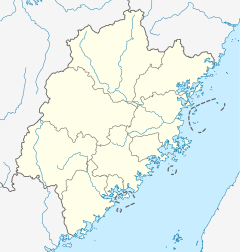Kaiyuan_Temple_(Quanzhou)
Kaiyuan Temple (Quanzhou)
Buddhist temple in Quanzhou, China
Kaiyuan Temple (simplified Chinese: 开元寺; traditional Chinese: 開元寺; pinyin: Kāiyuán Sì; Pe̍h-ōe-jī: Khai-gôan-sī) is a Buddhist temple located in West Street, Quanzhou, China, and is considered as the largest Buddhist temple in Fujian province with an area of 78,000 square metres (840,000 sq ft).[1][2] The central figures of veneration in the temple are the Five Tathāgathas from Chinese Esoteric Buddhism who are enshrined in the temple's Mahavira Hall. In 2021, the temple was inscribed on the UNESCO World Heritage List along with other sites near Quanzhou because of its importance during the medieval global maritime trade based in Quanzhou and its testimony to the global exchange of ideas and cultures.[3] The temple is also one of few in China to contain Hindu monuments, left there by traders from Southern India.
You can help expand this article with text translated from the corresponding article in Chinese. (February 2017) Click [show] for important translation instructions.
|


